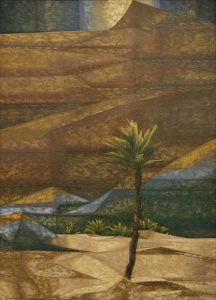The poet of the palette: Remembering Jehangir Sabavala’s meditative landscapes

Jehangir Sabavala
Sneha Gautam
The landscapes of Jehangir Sabavala (August 23, 1922- September 2, 2011) feel more like quiet poems than just paintings. In his oil compositions, whether expansive coastlines or serene inland vistas he artfully blended shadow and light, texture and space, to conjure a rare kind of stillness. His canvases often carry an intricate depth and exude a sense of peace and tranquillity, even when depicting barren or desolate scenes.
His return to India in the mid-1960s marked the consolidation of a uniquely personal vocabulary, one that carried echoes of Cubism, Impressionism, and Expressionism, yet ultimately asserted its own modernist voice. This synthesis produced landscapes that are less about literal representation and more about quiet resonance.

The creative journey of Jehangir Sabavala unfolded over six decades of discipline and exploration, beginning with his formative years at Mumbai’s Sir J. J. School of Art and culminating in a series of distinguished exhibitions across India and abroad. His canvases themselves became meditations—places in which viewers might pause, feel, and reflect. Critics have often observed how he preferred to use veiled light and middle tones rather than resorting to loud or dramatic imagery.
One of his most celebrated works, The Sky Like a Burning Furnace (1968), captures Sabavala’s mastery of compositional balance. Inspired by the twilight skies of Mahabaleshwar, the painting radiates with restrained intensity. Subtle brushstrokes and tonal layering come together to evoke both landscape and longing, demonstrating how he could transform nature into a deeply emotional experience.

Another significant canvas, Under the Shadow Of… II, highlights his disciplined approach to form and atmosphere. Elongated figures and muted structures inhabit a space that is neither fully abstract nor fully representational. The subdued palette and geometric order draw the viewer inward, creating a stillness that lingers beyond the canvas. In such works, Sabavala showed how geometry could coexist with lyricism, giving rise to an art that was at once precise and poetic.
Beyond these landscapes and figures lies the enduring strength of his vision. Sabavala’s works are not loud declarations; they are hushed musings on existence. In an age when art often clamors for attention, his paintings remind us that beauty can also reside in silence, in tonal restraint, and in the quiet sweep of the horizon.
“Poet of the palette” is more than just a flattering epithet—it is a testament to how Jehangir Sabavala translated inner
Sneha Gautam is Director – Client Relations at AstaGuru Auction House

